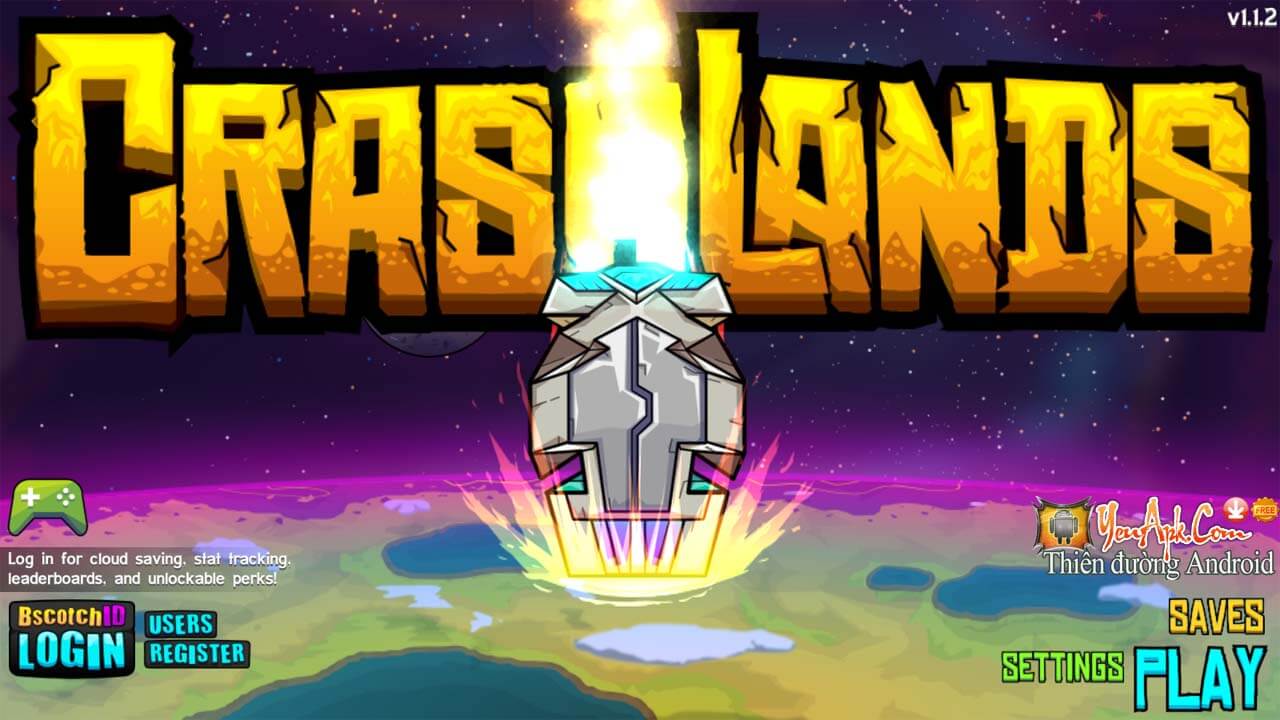

There’s a lot of dialogue in the game and it’s really fun stuff. The content of the quests is pretty standard for an RPG, but the thing that really kept me going was Crashlands’ sense of humor. Most these of these are fetch quests or “go kill this big version of a normal enemy” and I started getting flashbacks to my days playing World of Warcraft. This progression is occasionally shaken up by very rare legendary items, or when the next tool or crafting station is unlocked by completing story quests. It’s a good game on PC, but probably a better one on mobile. It was still satisfying to feel myself getting stronger-going back to early areas and one-shotting Wompits felt like popping a fresh sheet of bubble-wrap-but I wish there’d been some branching paths in that growth. There were no choices that might differentiate my playstyle from anyone else who would pick up the game-there’s only ever one choice: better or worse.

Every piece of equipment is imbued with random buffs like a chance to stun or resistance to certain types of attacks-my personal favorites were the damage-over-time effects-but the benefits were negligible compared to the guaranteed DPS and health increase with each new level, so those extra abilities did nothing to influence my decision to upgrade. The level eight weapon was pretty much always a better option than the level seven weapon. I could see that not being a problem if I were playing Crashlands for 20 minutes on the train to work each day, but my actions began to feel hollow when I knew the items I was working for would quickly become trash.īut the main reason this constant churn of item upgrades feels daunting is that there’s basically no player choice involved. So if I sat down and played Crashlands for two hours, chances are the armor and weapons I began with would be obsolete twice over by the time I stopped. Worse, it felt like Crashlands assumed I would be playing in short bursts rather than multiple hours at a time, because I seemed to reach a new tier of crafting bench roughly every hour or so.

There's very little variation from this structure. An infinite inventory also allows for even better changes to the formula, like automatically picking up drops from killed enemies, because why would you make me click the loot every time I make something explode? Many hard-to-find materials could be needed later, and always being able to pick them up meant I was never punished with inventory busywork to enjoy the discovery. Not having to worry about picking up too many sticks or flowers was a relief, as Crashlands asked me to grow my strength instead of scavenge to survive. This is the first major design choice influenced by the mobile platform, and it’s a great one. You can pick up as much junk as you want and it sorts itself, becoming instantly available when you approach a crafting station. Most noticeably, there’s no inventory management. Survival game tropes like crafting and resource collection are still here, but they’ve been simplified. I spent most of my time doing missions for the grotesque but charming denizens of the world, helping them kill beasts, undermine demigods, or just go fishing. Instead of hunger and thirst bars, developer Butterscotch Shenanigans puts the focus on combat and quests. At first glance, it seems very similar to Klei's whimsical survive-'em-up Don’t Starve, but Crashlands isn’t trying to be a survival game.
#CRASHLANDS MODS DRIVER#
You play as Flux, an intergalactic delivery truck driver who has crash landed on an alien planet, and must find a way off so she can finish her deliveries. Crashlands is a top-down action RPG with lots of exploration and crafting.


 0 kommentar(er)
0 kommentar(er)
